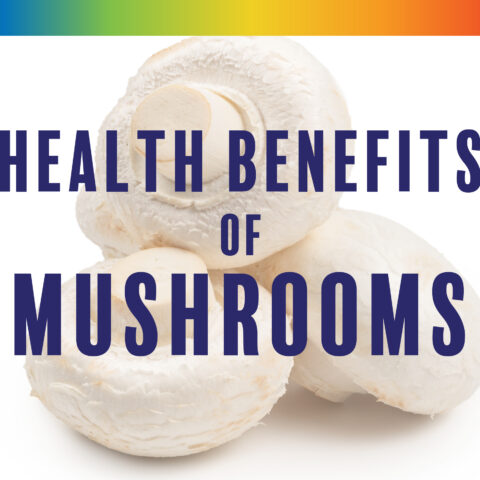Heart Disease, Stress, and Nanoparticles

Though the numbers have been trending downward in recent decades, heart disease remains the leading cause of death in the United States—claiming 647,457 lives in 2017. [1]
The primary killer within that general diagnosis, heart attack, is usually triggered by thrombosis—the formation of a blood clot caused when arterial atherosclerotic plaques rupture, releasing debris and clots that are carried into narrower arteries where they ultimately block the heart’s blood supply. [2]
Today’s “standard of care” treatment for cardiovascular disease (CVD) still involves managing blood cholesterol, typically with statin drugs. Millions of these pills are prescribed (and billions of dollars are spent marketing them) each year—yet people still die from heart attacks more than from any other reason. Surprisingly, many of these heart attack victims turn out to have had “normal” cholesterol levels. [3-4]
The conventional wisdom behind statin therapy and plaque buildup is based on two hypotheses. The “diet-heart” hypothesis states that dietary saturated fat increases blood cholesterol and causes heart disease. The “lipid” hypothesis states that too much or the wrong kind of cholesterol creates arterial plaque, which leads to heart disease.
These two interrelated hypotheses have dominated medical and dietary advice for over 50 years. Yet, true randomized controlled trials supporting either are limited.
In their recent book, Fat and Cholesterol Don’t Cause Heart Attacks and Statins Are Not the Solution, the late Dr. Paul Rosch, Dr. Malcolm Kendrick, and Dr. Uffe Ravnskov offer a comprehensive overview of the research in this field, including several studies and papers which reveal a lack of evidence behind the diet-heart and lipid hypotheses. [6]
Current research trends continue to support this position. One example is a June 2020 review in The Journal of American College of Cardiology, “[7] which found little to no evidence that dietary saturated fat contributed to CVD or all-cause mortality, and in fact found it was protective against stroke.”
But if elevated blood lipids don’t appear to be the culprit, what mechanism or combination of factors creates arterial plaques—one of the primary causes of heart attacks? There are several competing theories. One is supported by several persuasive researchers and argues that stress is the culprit. Their research gives this theory clear, quantitative support.
Stress and blood vessel injury
Dr. Malcolm Kendrick, a practicing British physician and co-author with Dr. Rosch, proposes that these plaques result from endothelial dysfunction brought on by stress—especially what he calls “psychosocial” stress. In his own book, The Great Cholesterol Con: The Truth About What Really Causes Heart Disease And How To Avoid It, [9] Dr. Kendrick looks closely at the endothelium—the lining of blood vessels—and how it reacts to insult or intrusion.
The following discussion is only a brief summary of Dr. Kendrick’s extensive research. Please see his book and blog for more detail.
According to Kendrick, when the endothelium is injured or strained, it responds by forming a blood clot over the injury, which is ultimately absorbed by the endothelium once healing is finished. If the same area is repeatedly injured, and clots continue to form, the endothelium can no longer efficiently re-absorb them and instead covers them with a cap or “plaque.” Over time the plaque can grow as new layers cover new blood clots and may ultimately rupture—releasing old clots and debris into the bloodstream.
Kendrick calls this the “response to injury hypothesis,” first proposed over 150 years ago by the Austrian pathologist Karl Freiherr Von Rokitansky as the “thrombogenic” or “encrustation” theory of atherosclerosis. [10] This theory regained popularity in the 1930s and 1940s. [11]
It’s important to point out that this theory is different from one of the more popular current theories of plaque development looking at transmorphing monocytes.
Social dislocation: first among stressors
Kendrick looked at high-CVD populations for possible causes of these endothelial injuries. He found that even in the absence of “traditional” risk factors—elevated blood lipids, obesity, diabetes, metabolic syndrome, among others—entire demographics consistently showed the highest CVD rates where social dislocation (among other types of stress) was prevalent.
One example he gave in his book was a study of CVD rates in emigrated Japanese, “Acculturation and Coronary Heart Disease in Japanese-Americans,” originally published in The American Journal of Epidemiology in 1976. [12] Japanese have a low CVD rate when they reside in their native country, but experience substantially increased CVD rates outside Japan, if their traditional culture is not maintained. The study’s California cohort revealed that the most “Westernized” Japanese had a five-fold increase in heart disease over those who maintained traditional lifestyles. Study author Michael Marmot noted, “Japanese culture is characterized by a high degree of social support. There is evidence this may contribute to the low rate of heart disease in Japan, and among Japanese-Americans who retain their traditional culture.”
Other socially dislocated populations noted by Dr. Kendrick are Australian Aborigines, government-relocated Glaswegians, Karelian Finns, Asian-Indian immigrants to the U.K. or U.S., and the countries of Poland and Ukraine. All of these groups, having abandoned or been forced out of their longstanding traditional cultures—or having been subject to foreign invasion—show much higher rates of CVD than those in their origin country or who have retained an undisturbed way of life.
Besides social dislocation, Kendrick also lists several more familiar types of stress, including chronic financial worry, constant racism or bullying (work, home or school), low socio-economic status, unhappy marriage, drug use, smoking, depression, and even eating under pressure.
A timely article in the AMA Journal of Ethics supports the notion that racism may contribute to CVD. “Race, Discrimination, and Cardiovascular Disease” by Drs. LaPrincess Brewer and Lisa Cooper [13] highlights how psychosocial risk factors of discrimination, in non-white American populations, are directly linked to increased CVD incidence.
How stress can contribute to heart disease
Kendrick notes that conventional medicine is reluctant to treat “stress” as measurable, or as a primary cause of disease—although many physicians vaguely counsel stress avoidance.
He demonstrates how, what he calls the “HPA axis,” becomes dysfunctional in CVD populations. This is the combination of the hypothalamus, pituitary gland, and adrenal glands, which secrete cortisol, growth hormone, adrenaline, and glucagon to initiate “fight or flight” stress. Cortisol levels, for example, rise and stay elevated, creating a cascade of downstream problems associated with increased CVD rates, including hypertension, metabolic syndrome, and insulin resistance syndrome.
Elevated cortisol—and, eventually, too little cortisol, due to burnout of the HPA axis—can be measured, and, hopefully, treated to reduce CVD likelihood.
How does stress, whether psychosocial or due to things like smoking, drug abuse, or elevated insulin, damage the arterial wall? Kendrick points out that these stressors are closely associated with endothelial dysfunction. One example of direct mechanical action is increased sheer stress on the arterial walls from hypertension. Blood flows more quickly through arteries, abrading the endothelium. This often takes place at arterial junctions and curvatures. [14]
Kendrick also observes that natural anti-clotting factors are often suppressed or deactivated during HPA-axis disturbance, which can lead to metabolic abnormalities. Impaired fibrinolysis (blood-clot breakdown) and endothelial cell injury were strongly linked to increased incidence of CVD in this 1995 New England Journal of Medicine Study [15], cited by Kendrick.
Kendrick’s perfect CVD storm looks like this: sustained psychosocial (or other) stress disturbs the HPA-axis, which in turn chronically elevates cortisol, resulting in metabolic abnormalities. These abnormalities repeatedly injure the endothelium while hijacking the blood’s natural “anti-clotting” factors. The repeated clots and multiple layers of plaque become an unstable, leathery, jagged time bomb.
Nanoparticles, anyone?
Dr. Kendrick’s prescription
Kendrick’s short list of anti-stress tactics includes avoiding cigarettes, embracing exercise, and curating community—which can include responsible social drinking. He also recommends becoming a positive force in other people’s lives. As much as possible, avoid bullying and victimhood, socially and in the workplace.
While this may sound like a list of simple homilies—a “tea towel for the soul”—this advice is widely echoed by many leading ancestral and conventional medical books and web resources.
Editor’s note: Heart disease is serious and should be treated immediately. You should seek medical advice if you think you have this or any other illness. Do not stop taking any prescribed medication without consulting your physician. Check with your physician before making any changes in lifestyle or ongoing course of treatment.
David Whiteside
David Whiteside devotes his time to researching and promoting awareness of Paleo and ancestral dieting in the senior community.
More About The Author



